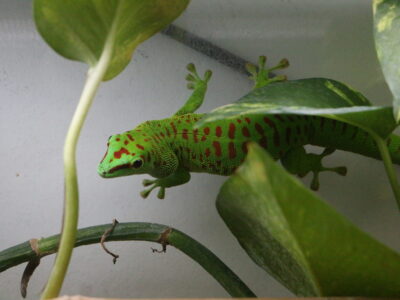DISTRIBUTION AND HABITAT
Northern part of Madagascar. It prefers humid and warm areas all year round.
BEHAVIOUR
Unlike many other species of geckos, they are diurnal animals. They move efficiently even on smooth surfaces such as glass, thanks to the presence of lamellas – special structures on the bottom of the fingers, folded from thousands of hairs.
DIET
They are omnivores. They feed on invertebrates – butterfly larvae, crickets, cockroaches, but also young plant shoots and flowers.
REPRODUCTION
Copulation is quite aggressive and is preceded by the male’s courtship – characteristic sounds and sideways shaking of the head. After 30 days, the female lays 2 eggs.
GOOD TO KNOW
They differ in the arrangement of red spots on their back and head – individuals can be identified by their pattern.
- Latin name: Phelsuma grandis
- IUCN –Red List – LC – Least concern
- CITES – Appendix II



This animal does not have a sponsor yet. You can become one.











